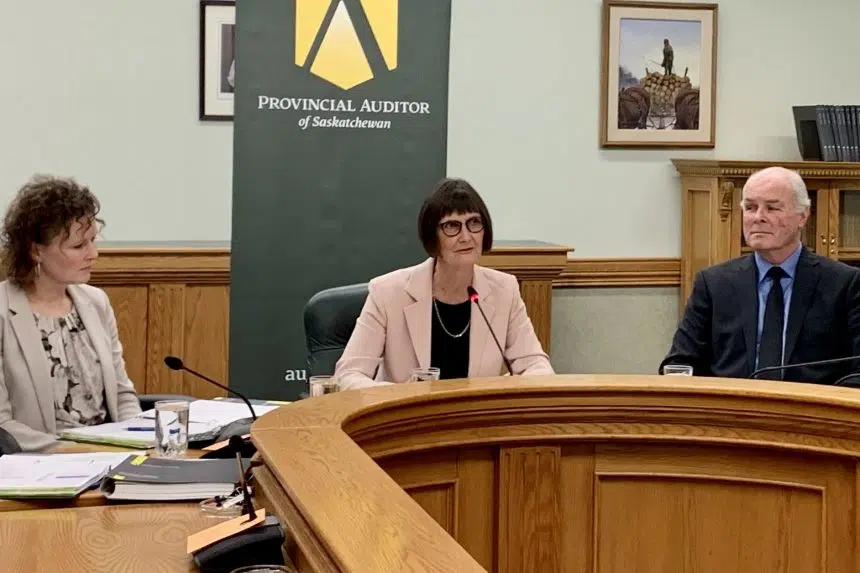Saskatchewan’s auditor has laid out a number of areas she believes the Saskatchewan Health Authority (SHA) has to improve to address the risk of suicide in northwest Saskatchewan.
In her 2019 report, which was released Thursday, Judy Ferguson said the average suicide rate in northwest Saskatchewan in 2018 exceeded the provincial average rate by almost 50 per cent.
That area recorded 27.9 suicides per 100,000 people in 2018. The rest of the province had a rate of 18.7 suicides per 100,000 people.
The issue came to the forefront again recently after a number of suicides on the Makwa Sahgaiehcan First Nation, as well as other First Nations in the province.
Ferguson noted the SHA uses the Saskatchewan Suicide Framework in its efforts to prevent suicides. But she pointed out that emergency department staff in the northwest area of the province don’t always follow the protocols.
In some cases, her office found patients who attempted suicide weren’t referred to see a psychiatrist before being discharged from emergency departments.
“What we think is that they should — particularly because research shows that about one-third of people that have accessed emergency departments, that reattempt, die within one month of visiting,” Ferguson explained.
Ferguson’s report also said:
Health care staff in facilities in northwest Saskatchewan don’t get sufficient training to care for suicidal patients, and training varies significantly.
- The SHA do enough inspections of facilities in northwest Saskatchewan to check for staff sightline obstructions or physical structures potentially used in attempting suicide;
- The SHA hasn’t determined why patients regularly don’t use psychiatric services provided through videoconferencing — an issue because some patients from smaller centres in the northwest have to travel great distances to get mental health services in larger centres;
- The SHA performed “limited analysis” of key data about suicide rates and suicide attempts to see if services for suicidal patients sufficiently met patient demand and accessibility;
- Risk-based file audits for patients at risk of suicide should be conducted; and,
- A single, provincially accessible electronic health file for mental health, addictions and suicidal patients should be created.
Rural and Remote Health Minister Warren Kaeding said the province accepts the auditor’s findings, and admits more work needs to be done within the affected communities.
“These initiatives have to be started within the community and has to be started with community leadership, and so what we’re working towards is to support those community leaders in building strategies within each and everyone of their communities,” Kaeding explained.
Kaeding added the province is already looking at what other jurisdictions across Canada are using strategy-wise to combat suicide rates.
However, Opposition NDP leader Ryan Meili said more needs to be done.
“It is absolutely a crisis — action is needed. We have not been pressing for this today or for the last week, we’ve been pressing for it for years and this government has failed to take any action,” Meili said. “This auditor’s report is very important because it highlights how pressing that action is.”
Greater controls for Wascana Centre development
Ferguson’s report also called on the Provincial Capital Commission (PCC) to “improve its approval processes for major developments in Wascana Centre, and to increase transparency.”
The auditor said the commission needs to do a better job of consulting with the public about controversial projects that are planned for Regina’s Wascana Centre — the Conexus building and the Brandt/Canadian National Institute for the Blind (CNIB) building.
Despite receiving negative feedback, work is already underway on the Conexus Credit Union building. It’s slated to be complete next spring.
The Brandt/CNIB project has been on pause as of late, pending the review from the auditor.
“In this particular situation, they cannot show that they fulfilled their responsibilities,” Ferguson said. “We think that they should be transparent with their decision making, make sure people understand the process that they’re using, make sure that they are getting sufficient public input and public consultation — they need to work on that area. When they make those decisions, share those decisions.”
In the report, Ferguson stated the PCC needs to produce “written, public consultation expectations and procedures” for developers to understand what’s required of them. Those documents also would allow citizens to know the PCC is committed to getting public input.
The auditor also said the PCC’s approval process of the two projects was flawed because they didn’t align with the committee’s master plan.
In the future, Lori Carr, the minister responsible for the PCC, said the board will ensure policies are followed.
“As we move forward with the recommendations that have been made with the provincial auditor, I’m hoping that — and I’m sure that as the plan comes forward from the Provincial Capital Commission — we’re going to clear all of that stuff up and there will be no ambiguity,” Carr said.
— With files from 980 CJME’s Jessie Anton











